Do you have a question about the Miele KFN 8762 SD ed and is the answer not in the manual?
Explains the Miele@home system and its benefits for remote appliance monitoring.
Guidance on environmentally friendly disposal and recycling of packaging materials.
Instructions for safe and environmentally sound disposal of the old appliance.
Information on coolant properties, flammability, noise, and potential hazards.
Defines intended use, prohibits misuse, and warns against child interaction.
Covers handling frozen food, electrical safety, and appliance operation.
Lists prohibitions for storing certain items and operational risks.
Details appliance disposal, ventilation, climate ranges, and vermin.
Provides guidance on installation, ambient temperature, and thermostat settings for energy saving.
Offers advice on door opening, food storage, and cooling hot items.
Explains how defrosting frequency impacts energy consumption.
Instructions for first use, cleaning, acclimatization, switching on/off, and cool pack.
How to switch the refrigerator section on/off separately.
How to activate/deactivate the safety lock to prevent inadvertent switching.
Procedure for switching off the appliance for extended periods.
Explains how to set refrigerator and freezer temperatures using controls.
Details the adjustable temperature limits for refrigerator and freezer sections.
Explains how temperature displays work and when they flash.
How to adjust the brightness level of the temperature displays.
Describes the warning system for temperature rise and door opening.
Details the alarm triggered by leaving the freezer door open.
How to manually turn off the alarm before the set temperature is reached.
How to use Super Cool for rapid chilling of fresh food.
Explains the importance of quick freezing for food quality.
How to use Super Freeze for optimal freezing of large quantities.
Explains how Dynamic Cooling ensures even temperature distribution.
Details temperature zones and best placement for different food types.
Lists fruits, vegetables, and cheeses unsuitable for refrigerator storage.
Guidelines for covering food, storing fruit/veg, meat, and protein-rich items.
Instructions for adjusting shelf height and placing the split shelf.
How to remove and replace door shelves for optimal storage.
How to reposition the bottle divider for secure bottle storage.
Guidelines on not exceeding the stated freezing capacity within 24 hours.
Tips for checking packaging, dates, and temperature of purchased frozen food.
Lists suitable and unsuitable foods for freezing, and blanching vegetables.
Recommends portioning, suitable materials, and expelling air from packaging.
Guidance on where to place food and drawer loading limits.
Explains how to use the freezer calendar and marker system for tracking food.
Explains automatic defrosting of condensate and frost in the refrigerator.
Details the automatic 'Frost free' system for the freezer section.
Warnings against abrasive cleaners, water ingress, and steam cleaning.
Steps to take before cleaning, including power off and food removal.
Instructions for cleaning the outer casing, interior, and accessories.
How to clean ventilation gaps and door seals for optimal performance.
Instructions for dusting the metal grille at the back of the appliance.
Steps to follow after cleaning, including reassembling and restarting the appliance.
Troubleshooting steps when the refrigerator or freezer section is not getting cool.
Steps to take if the temperature in either section is too low.
Troubleshooting for frequent compressor cycling or long run times.
Addresses issues where frozen food is thawing due to warm freezer.
Explains specific error codes ('F1'-'F5', 'nA') and flashing displays.
Troubleshooting steps for a non-functional interior light, including lamp replacement.
How to resolve a wet floor in the refrigerator, usually a blocked drain.
Identifies common operating sounds like humming, gurgling, and clicking.
Addresses rattling and vibrating noises and their causes, like unevenness or loose parts.
Details connection requirements, plug safety, and RCD recommendations for UK.
Guidance on fuse replacement and cover fitting for BS 1363 plugs.
Specifies ideal room conditions, temperature limits, and avoiding heat sources.
Explains the need for clear air inlet and outlet gaps for proper ventilation.
Instructions on positioning the appliance, checking rear clearance, and against a wall.
How to adjust the appliance feet for proper leveling.
Step-by-step guide to safely remove door handles.
Procedures for removing lower and upper doors and hinge pins.
Instructions for refitting hinge brackets, spacers, and plugs on the opposite side.
Steps for refitting the lower door, plinth fascia, and securing the hinge plate.
Guides on refitting handles, ensuring seal clearance, and making adjustments.
Guidance on installing the appliance within kitchen furniture and top boxes.
Specifies required gaps for ventilation and door opening when next to a wall.
Explains the Miele@home system and its benefits for remote appliance monitoring.
Guidance on environmentally friendly disposal and recycling of packaging materials.
Instructions for safe and environmentally sound disposal of the old appliance.
Information on coolant properties, flammability, noise, and potential hazards.
Defines intended use, prohibits misuse, and warns against child interaction.
Covers handling frozen food, electrical safety, and appliance operation.
Lists prohibitions for storing certain items and operational risks.
Details appliance disposal, ventilation, climate ranges, and vermin.
Provides guidance on installation, ambient temperature, and thermostat settings for energy saving.
Offers advice on door opening, food storage, and cooling hot items.
Explains how defrosting frequency impacts energy consumption.
Instructions for first use, cleaning, acclimatization, switching on/off, and cool pack.
How to switch the refrigerator section on/off separately.
How to activate/deactivate the safety lock to prevent inadvertent switching.
Procedure for switching off the appliance for extended periods.
Explains how to set refrigerator and freezer temperatures using controls.
Details the adjustable temperature limits for refrigerator and freezer sections.
Explains how temperature displays work and when they flash.
How to adjust the brightness level of the temperature displays.
Describes the warning system for temperature rise and door opening.
Details the alarm triggered by leaving the freezer door open.
How to manually turn off the alarm before the set temperature is reached.
How to use Super Cool for rapid chilling of fresh food.
Explains the importance of quick freezing for food quality.
How to use Super Freeze for optimal freezing of large quantities.
Explains how Dynamic Cooling ensures even temperature distribution.
Details temperature zones and best placement for different food types.
Lists fruits, vegetables, and cheeses unsuitable for refrigerator storage.
Guidelines for covering food, storing fruit/veg, meat, and protein-rich items.
Instructions for adjusting shelf height and placing the split shelf.
How to remove and replace door shelves for optimal storage.
How to reposition the bottle divider for secure bottle storage.
Guidelines on not exceeding the stated freezing capacity within 24 hours.
Tips for checking packaging, dates, and temperature of purchased frozen food.
Lists suitable and unsuitable foods for freezing, and blanching vegetables.
Recommends portioning, suitable materials, and expelling air from packaging.
Guidance on where to place food and drawer loading limits.
Explains how to use the freezer calendar and marker system for tracking food.
Explains automatic defrosting of condensate and frost in the refrigerator.
Details the automatic 'Frost free' system for the freezer section.
Warnings against abrasive cleaners, water ingress, and steam cleaning.
Steps to take before cleaning, including power off and food removal.
Instructions for cleaning the outer casing, interior, and accessories.
How to clean ventilation gaps and door seals for optimal performance.
Instructions for dusting the metal grille at the back of the appliance.
Steps to follow after cleaning, including reassembling and restarting the appliance.
Troubleshooting steps when the refrigerator or freezer section is not getting cool.
Steps to take if the temperature in either section is too low.
Troubleshooting for frequent compressor cycling or long run times.
Addresses issues where frozen food is thawing due to warm freezer.
Explains specific error codes ('F1'-'F5', 'nA') and flashing displays.
Troubleshooting steps for a non-functional interior light, including lamp replacement.
How to resolve a wet floor in the refrigerator, usually a blocked drain.
Identifies common operating sounds like humming, gurgling, and clicking.
Addresses rattling and vibrating noises and their causes, like unevenness or loose parts.
Details connection requirements, plug safety, and RCD recommendations for UK.
Guidance on fuse replacement and cover fitting for BS 1363 plugs.
Specifies ideal room conditions, temperature limits, and avoiding heat sources.
Explains the need for clear air inlet and outlet gaps for proper ventilation.
Instructions on positioning the appliance, checking rear clearance, and against a wall.
How to adjust the appliance feet for proper leveling.
Step-by-step guide to safely remove door handles.
Procedures for removing lower and upper doors and hinge pins.
Instructions for refitting hinge brackets, spacers, and plugs on the opposite side.
Steps for refitting the lower door, plinth fascia, and securing the hinge plate.
Guides on refitting handles, ensuring seal clearance, and making adjustments.
Guidance on installing the appliance within kitchen furniture and top boxes.
Specifies required gaps for ventilation and door opening when next to a wall.
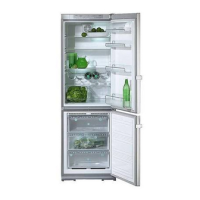
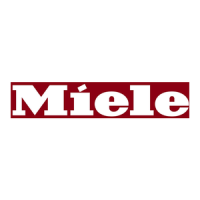


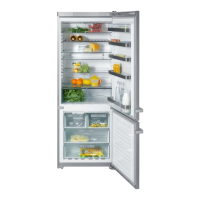
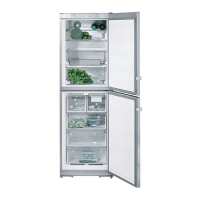
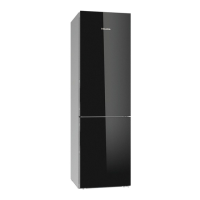
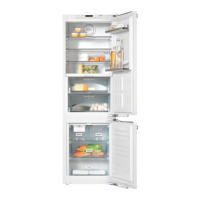
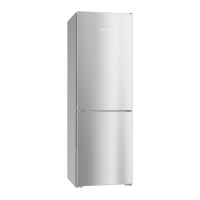



